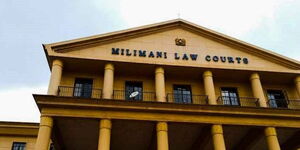The first ship to ever sail in Lake Victoria was called SS William Mackinnon. It was carried on foot,in parts, from Mombasa to Kisumu after a long journey from Glasgow, Scotland, where the parts were assembled.
In 1894, British Parliament had passed a budget to put a steamship on Lake Victoria that would mark its control of the headwaters of the Nile. With the railway not yet constructed, one of the questions asked was how the cargo would reach Lake Victoria, a distance of more than 933 kilometres.
A decision was arrived at to carry the 70-tonne cargo on foot from Mombasa to Kisumu. At first, the engineers cut the ship into 3,000 loads, with most not exceeding 27 kilogrammes for the overland journey from Mombasa. Only two engine pieces exceeded the porter weight of 27kg.
In June 1895, two Scottish mechanics sailed to Mombasa with the entire cargo and the recruitment of Swahili porters to carry the load to Kisumu started.
Challenges began when most of the cargo was abandoned along the route by weary porters even before they reached at the first stop point, in Mazeras, where an inland warehouse had been built.
The search for the missing cargo took several months. The Mazrui rebellion of 1896, broke out in which members of the coastal Arab society reacted violently to the establishment of the colonial rule. More cargo was scattered at Mazeras and the transporter, Smith Mackenzie, had difficulties continuing with the journey.
More cargo and porters disappeared when the caravan passed through Maasai territory and Uasin Gishu. Finally, the British government decided to import camels and ox carts from Karachi to transport the remaining load.
In London, Smith Mackenzie was coming under pressure from another company, Bousted and Ridley, that suggested that they could use the Tanganyika route, and therefore should be given the transportation business.
A supervisor named James Martin was sent to follow the cargo on foot but he was sabotaged by Captain Sclater who was building the Nairobi to Mombasa Road.
Sclater had taken the imported animals for his road project and took more than 1,000 porters who had been recruited by Martin. They were employed by the railway project, which was under way.
By 1897, the Uganda mutiny broke and the project stalled further. Months later, in July 1897, Sclater died.
Despite these setbacks, the British government sent two engineers to Kisumu to await the cargo. The arrival of MacMillan and Brownlee in the company of Richard Grant and 200 porters signalled the building of SS William Mackinnon.
Richard Grant then left to fetch some cargo left in Nandi Escarpment but when he returned, he found that Macmillan had died and Brownlee was down with malaria.
It was engineer Barton Wright who finally managed to deliver the last cargo in 1900. Engineers in Mombasa had to replace some missing pieces and the wood from Nandi would also take some time. But on October 30, 1900 SS William Mackinnon made its first sail.












